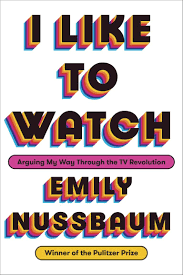 Helen Garner's Yellow Notebook - Diaries Volume 1 (1978-1987) covers an interesting period in her life. She has just published her debut novel Monkey Grip (1977) and is on the cusp of success. But she is also riddled with self-doubt, fuelled by any whiff of a negative critique. She is a hard working author who writes frankly about her successes and failures - her inability to create and when the words flow easily - providing insight to the feast-or-famine life of a writer.
Helen Garner's Yellow Notebook - Diaries Volume 1 (1978-1987) covers an interesting period in her life. She has just published her debut novel Monkey Grip (1977) and is on the cusp of success. But she is also riddled with self-doubt, fuelled by any whiff of a negative critique. She is a hard working author who writes frankly about her successes and failures - her inability to create and when the words flow easily - providing insight to the feast-or-famine life of a writer.The diary isn't written in a daily format, rather it is comprised of snippets, observations, sentiments and glimpses. In one entry she will describe her anxiety as an author, the next she will write about her blossoming Christianity. Then she will insert a scathing critique like 'Siouxsie and the Banshees at l'Empire. They were revolting' (1978, p6). She writes with such clarity and conciseness, wit and immediacy, that readers can't help but become engrossed.
Throughout the ten years of this notebook, we meet a range of fascinating people and gain some understanding of Helen's character. Her daughter, M, is growing and becoming more independent. Helen's fierce maternal love and admiration for her child seeps through the pages.
Her marriage to second husband F is fading and she contemplates their future in the pages of her notebook. One diary entry that particularly struck me was when Helen writes 'F offered to pay some of my expenses so I could stop doing journalism and concentrate on my own work. I felt a stab of panic at the thought of being dependent' (1982, p31). Having experienced a similar sensation at one point in my life, I could completely relate.
It is this relatability which makes reading her diaries so enjoyable. Helen's vulnerability and self-deprecation is on full display. She can be cranky, mean-spirited, loving and kind. She is wholly present and human. My favourite sentence in the whole book is this: 'I made some curtains for my room and they are a disaster' (1985, p137). There is something about the simplicity and frankness of her critique that made me roar with laughter.
While not a book for every reader, I found such pleasure in reading the Yellow Notebook. I look forward to the next volume.
My reviews of some of Garner's other works appears on this blog:
